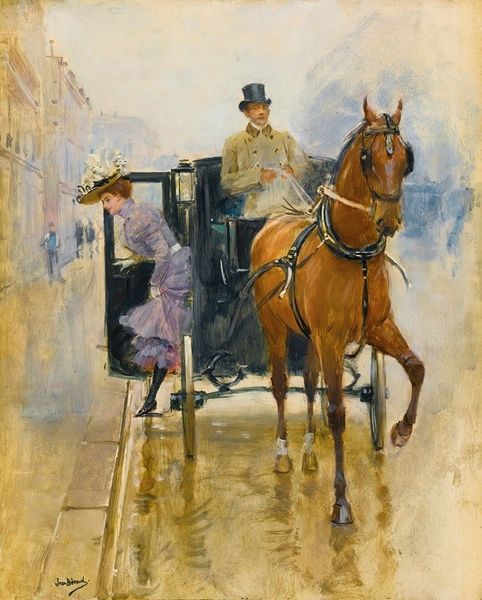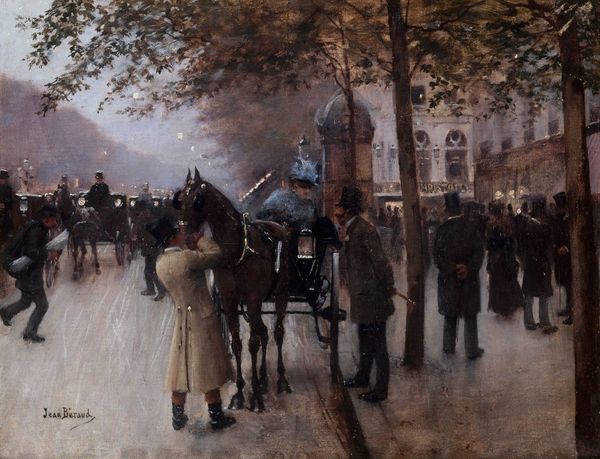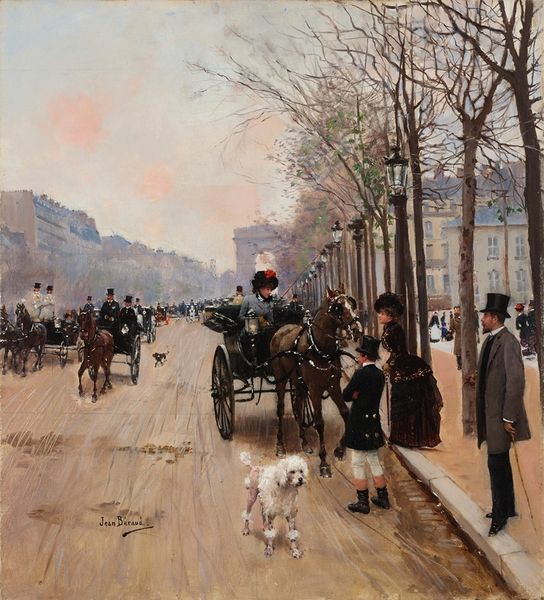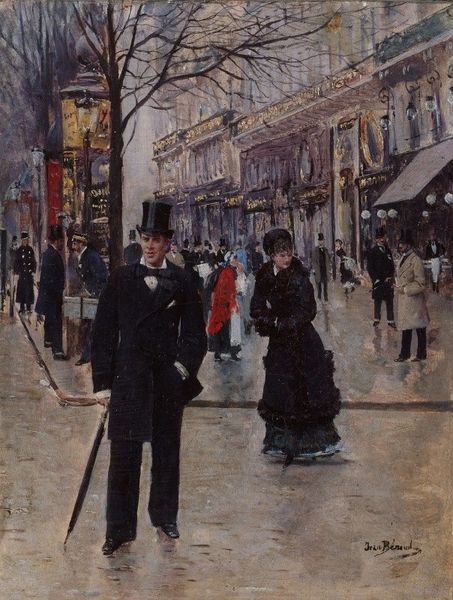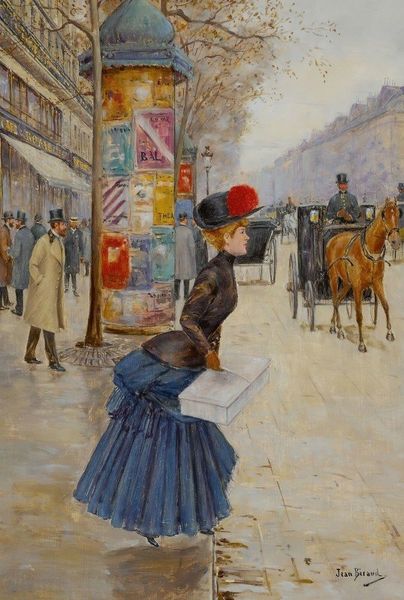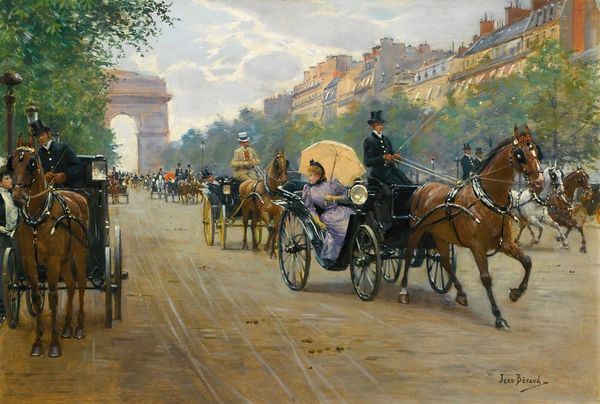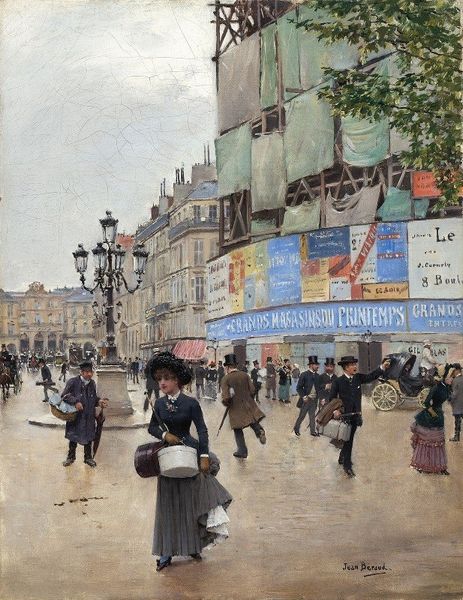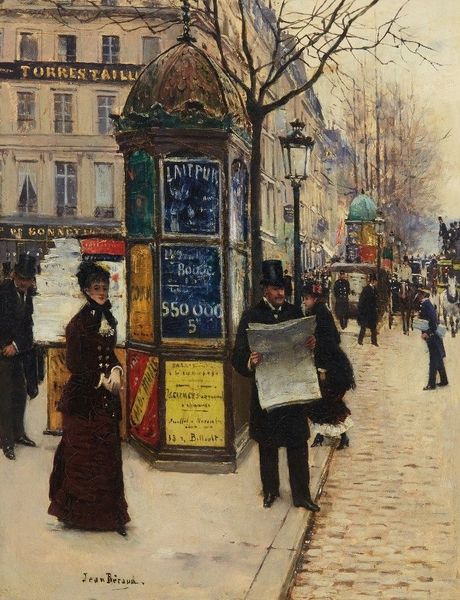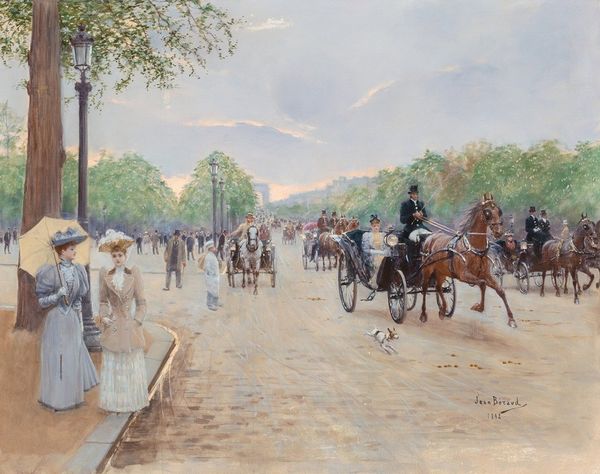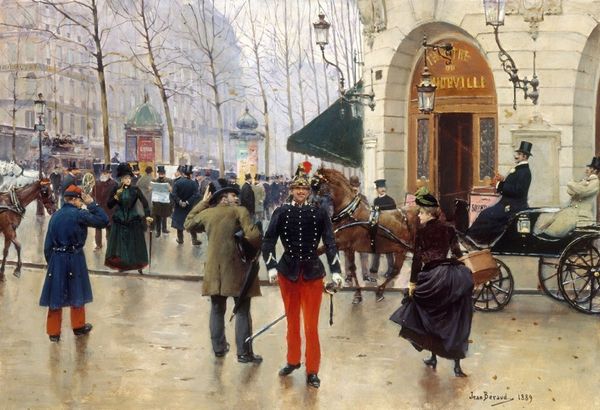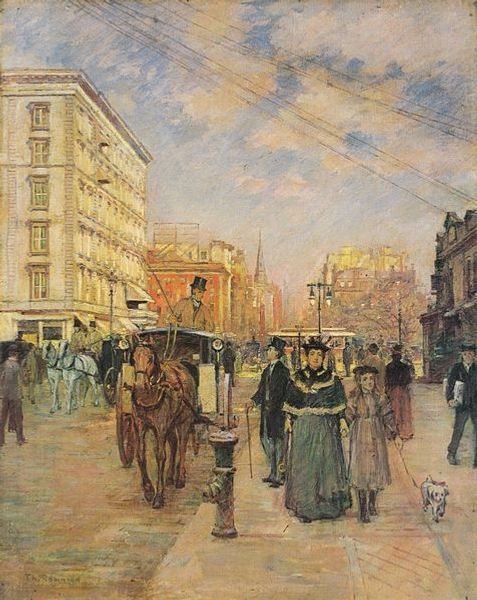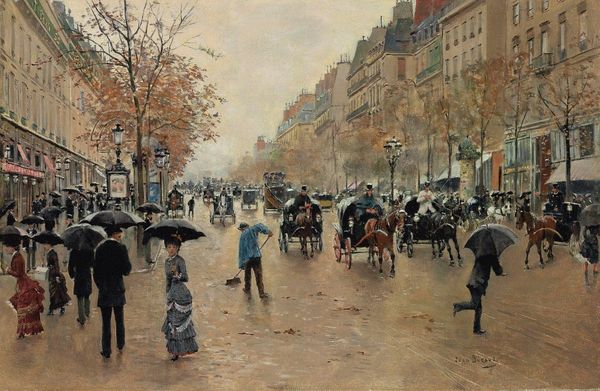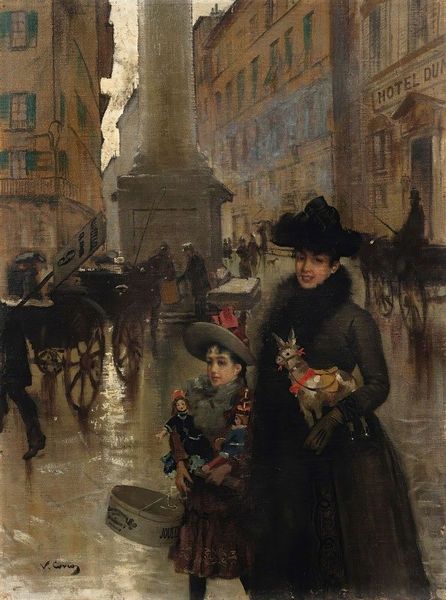
painting, oil-paint, watercolor
#
flâneur
#
painting
#
impressionism
#
oil-paint
#
oil painting
#
watercolor
#
cityscape
#
genre-painting
#
modernism
#
watercolor
Copyright: Public Domain: Artvee
Editor: Jean Béraud's *Courses Rue De La Paix* is a street scene, painted with what looks like oil paints, bustling with carriages and pedestrians. It's a lively, elegant snapshot of Parisian life; almost like a candid photo. How would you interpret this work in terms of its historical context? Curator: I see this piece as a visual document of late 19th-century Paris, a city undergoing rapid transformation. Béraud captures a moment of bourgeois leisure and consumption. But what about the *unseen* labour that supports this spectacle? Where are the working classes, the people who literally paved these streets and sew these dresses? Are they deliberately erased, or are they present by their absence? Editor: That's a compelling point; I hadn't considered the deliberate omission. Is Béraud complicit in this erasure, or is he simply reflecting his social environment? Curator: Perhaps both. He’s a product of his time, inevitably shaped by its ideologies. But consider, too, the role of the *flâneur*, the detached observer, who Walter Benjamin wrote about. Béraud's painting presents a scene, but also subtly comments on the social divisions inherent within it, making the viewer conscious. The visual pleasure might distract the casual observer, or the consumer. Editor: So, the beauty and apparent celebration of Parisian life actually masks a critical commentary? Curator: Precisely. Look closely at the women, their dress and presentation: this requires the unacknowledged labour and exploitation of sweatshops, a clear social divide is visible. Béraud's work functions on multiple layers, isn't it interesting? It both showcases and subtly questions the opulence of the *belle époque*. Editor: Absolutely! It makes me reconsider the image, it’s more than just a pretty cityscape. It is also speaking about capitalism, class and gender. I’ll keep a closer eye on these things moving forward.
Comments
No comments
Be the first to comment and join the conversation on the ultimate creative platform.
